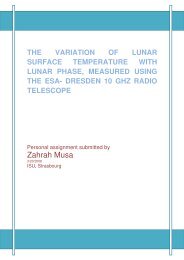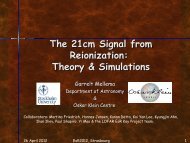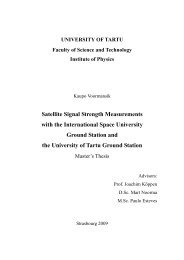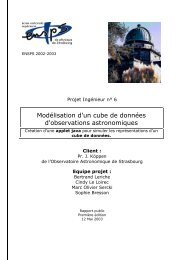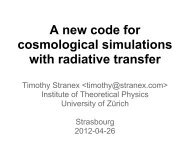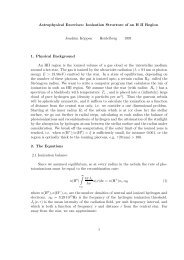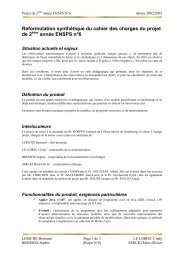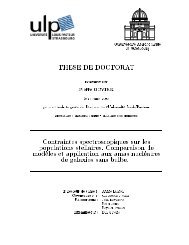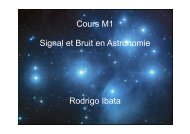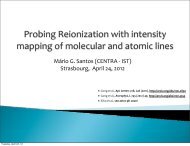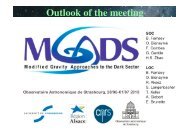View - Observatoire Astronomique de Strasbourg
View - Observatoire Astronomique de Strasbourg
View - Observatoire Astronomique de Strasbourg
You also want an ePaper? Increase the reach of your titles
YUMPU automatically turns print PDFs into web optimized ePapers that Google loves.
ASTRONOMICAL PUBLISHING 15<br />
The Society, through its publications, disseminates and archives the results<br />
of astronomical research. The Society also communicates and explains<br />
our un<strong>de</strong>rstanding of the universe to the public.<br />
Individuals have the usual additional reasons for publishing, which inclu<strong>de</strong><br />
career advancement (publish or perish), i.e. to obtain credit and prece<strong>de</strong>nce<br />
for research leading to employment and sometimes tenure. Publications<br />
are necessary to obtain support, e.g. grants, and, in some cases, cash<br />
(writing for hire). How much these drive the process of publication <strong>de</strong>pends<br />
on both research field (instrumentalists do not publish much in the traditional<br />
sense, rather they publish in metal, plastic and semiconductors), and<br />
on location (astronomers working in industry or teaching colleges are subject<br />
to different criteria for advancement). Theorists publish, in numbers<br />
of papers per unit time, more than observers, who in turn publish more<br />
than instrumentalists. But, fundamentally, we publish to communicate –<br />
the title of this workshop.<br />
How will this evolve? Do we expect change in the “why” of publishing?<br />
The primary reason won’t, at least for the foreseeable future. The secondary<br />
reasons might, for example, due to <strong>de</strong>mographic shifts or career shifts. The<br />
nature of tenure is changing, and most astronomers actually are not in traditional<br />
aca<strong>de</strong>mic tenure or tenure track positions. The latest <strong>de</strong>mographic<br />
studies for the Decadal Survey find that only∼40% of astronomers work<br />
at research universities and an additional∼15% are at small colleges. Even<br />
among those at research universities, a significant fraction are in research<br />
or soft money positions as opposed to line faculty jobs. The criteria for<br />
employment are changing as well, and, as well discuss later, the way we do<br />
research is also fundamentally changing.<br />
3. Publishing Mo<strong>de</strong>ls<br />
Working provisional copy - Pls do not circulate<br />
Again, no discussion of the future of astronomical publishing would be<br />
complete without un<strong>de</strong>rstanding the business mo<strong>de</strong>ls that are in use. It is<br />
also likely that these will have to evolve as additional stresses are placed<br />
on publishers, libraries and authors. There is a fundamental principle here<br />
that publishing is not free, especially if refereeing is required, copy editing<br />
is used to enforce stylistic criteria and check the grammar of authors and<br />
journals adhere to the principles of archiving and curation that are natural<br />
parts of the scientific process. There are five basic business mo<strong>de</strong>ls in use<br />
today:<br />
1. Primarily subscription charges to libraries and individuals. This is a<br />
mo<strong>de</strong>l often adopted by for profit publishers but also societies or organizations<br />
with limited other resources (e.g. the AIP).<br />
2. User pays, primarily page or article charges.



